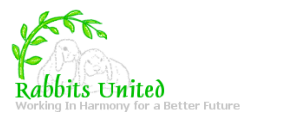Floofbunny
Young Bun
Hi,
So I swear "normal" rabbit breeds used to be popular back in the day.
But now it all seems to be mini lops, Netherland Dwarf or Lionhead all the time.
But I don't understand,
These breeds are the unhealthiest and few people have time to groom a dog or cat, let alone a lionhead.
They're sweet, but the majority of the market? Pushing poor Dutch to the side?
So why the sudden surge in popularity?
Are they as unhealthy as people say they are?
Do you think it's a fad that will die down or be banned like pug or frenchie in the future?
I'm just so confused
So I swear "normal" rabbit breeds used to be popular back in the day.
But now it all seems to be mini lops, Netherland Dwarf or Lionhead all the time.
But I don't understand,
These breeds are the unhealthiest and few people have time to groom a dog or cat, let alone a lionhead.
They're sweet, but the majority of the market? Pushing poor Dutch to the side?
So why the sudden surge in popularity?
Are they as unhealthy as people say they are?
Do you think it's a fad that will die down or be banned like pug or frenchie in the future?
I'm just so confused



